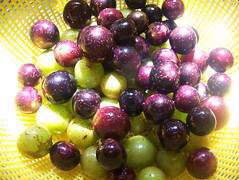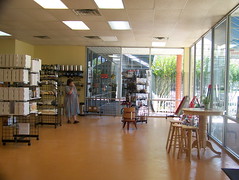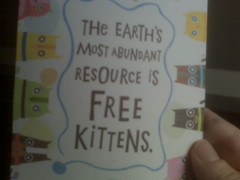
Bristlecone Pine
For a couple of years I have had an idea completely unrelated to my current field of endeavor. The idea — tentatively named Bristlecone, for the oldest surviving pine trees — is, quite simply, a preservation plan for literary journals.
The problem, in a nutshell
No matter how passionately committed the publishing agency for any one literary journal, or how many copies are currently housed worldwide on actual library shelves or on servers, when time and interests shift, if there is no intentional plan to ensure a minimum number of copies are maintained (and there are formulas for determining the minimum), these creations will disappear as if they never existed in the first place.
As a librarian and writer, I believe that Bristlecone, or something like it, is necessary. I very much have a dog in this fight — several dogs, for that matter. I have shopped my ideas around and received a variety of responses, many positive, many that helped me further refine the ideas.
However, Bristlecone is so far afield from my current areas of professional engagement that I don’t have a way to take a next step. So I release this into the wild, not because I am letting go of this idea but to allow it to incubate more openly, perhaps with more cross-pollination between the two communities.
Defining the terms
Before I get much farther into this discussion, let me define some terms, since this idea crosses two communities with separate knowledge sets. Toward building a common cross-domain knowledge, I have considerably simplified and condensed these ideas.
- Preservation is “concerned with maintaining or restoring access to artifacts, documents and records through the study, diagnosis, treatment and prevention of decay and damage.” Preservation is intentional, and is focused on ensuring that paper or digital artifacts are available long after we’re all dead.
- Literary journals (or magazines) are that small subset of periodicals that primarily or exclusively publish “short stories and longer fiction, poetry, creative nonfiction, essays, literary criticism, book reviews, author interviews, art and photography.” The Journal of Advanced Microbiological Entomological Research is not a literary journal. Atlantic Magazine isn’t a lit journal, either. Most lit journals are published by universities or nonprofit organizations, sometimes by writing programs. These small, relatively inexpensive journals, while almost never carried by public libraries and only irregularly housed by university libraries, are the crucibles for many emerging writers, who both publish and read these journals (as do agents, I have been advised). These journals are crucial to our literary ecology.
- The phrase “open access” will come into play. Wikipedia defines open access as “the publication of material in such a way that it is available to all potential users without financial or other barriers.â€
- Other terms and phrases such as “trigger event” and “last copy” have special meaning in this discussion, and will be defined as we go along.
Why Bristlecone? Why Now?
I believe the future of publishing is digital. I also believe that the decisions we are making — right now, today, not a decade or twenty years from now — as literary communities move into e-publishing and libraries contract and consolidate paper-based print collections, will decide the future of our cultural heritage —and we need to get this right, since we can’t fly into the future to correct our mistakes.
Why literary journals?
Because I know literary journals, care about them, understand their culture, appreciate their contributions to world literature, and worry their needs will be overlooked in the Big Shift.
Literary journals excel at publishing great literature, but their publishing arms tend to be naive about issues such as preservation. Meanwhile, libraries focusing on serials-related issues are generally not well-attuned to the characteristics and longterm needs of literary journals.  This is understandable — librarians acquire, provide access to, and manage humongous bodies of heterogeneous information, and literary journals are a mere pinky-fingernail on the corpus of serial publishing.
But because — straddling two worlds — I do see the problem, I feel it incumbent to at least share one approach to addressing it.
Where we are today
Many small print literary journals have been operating on a slender cost-recovery basis, in which the traditional scarcity-based publication model uses journal subscriptions to cover the cost of fulfillment (printing, postage, and other resources required to produce and distribute paper-based artifacts) as well as editorial, marketing, and other costs.
In response to a variety of factors — many cost-related — literary journals have been moving online. Unlike their sister publications in the newspaper and popular-magazine industries, online publishing allows literary journals an alternative to the rapidly rising costs of traditional fulfillment without creating revenue problems. (I began this proposal before the recession began, and this is all more true than before.)
Journals such as Tin House and Ninth Letter are using websites, presences on social networking sites such as Facebook, and email lists to market their traditional subscriptions. Others, such as White Crane, place some digital content online to entice their potential audiences. A few journals have adopted a hybrid publishing model—q.v. the recent announcement of the Missouri Review to offer all of its content as e-prints and podcasts—while some are either born digital, such as Brevity, or have moved entirely online.
Some literary journal publishers have adopted subscription-based online models, attempting to duplicate the revenue model that supported traditional print fulfillment; more appear to be adopting open access models that make the content freely available, and then use other methods, such as conferences or the sale of related print publications, to generate enough revenue to cover digital production costs — strategies that were often necessary for the increasingly costly paper-based fulfillment model.
So there are creative responses that allow literary journals to survive and even thrive, even in the face of economic crisis and format changes. But few if any publishers or libraries have intentionally and consciously addressed the long-term preservation issues of literary journals.
Solving the Last Copy Problem
One of the most basic principles of long-term preservation of cultural records is the idea of replication. Think of the impact war and natural disaster can have on the art world by the destruction of lone-copy, sui generis creations. Now apply this to the bibliographic world. Having one last copy of a book or journal, whether it is paper or digital, is perilously close to having none. (Consider the lone server, with its dubious backup, as little better than one copy.)
One solution to this last-copy problem, common to print and digital, is to ensure there are enough copies available to survive trigger events such as natural disasters (or even the closure of institutions, as we may see happening if our economic crisis deepens).
In the academic world, last-copy agreements for print materials—which are common if not ubiquitous for some materials—help university libraries determine what to discard and what to save, whether shelved in a local collection or, as is increasingly the case for low-use items, high-volume centralized mass storage facilities.
LOCKSS for digital preservation
Some libraries have turned to replication for ensuring the long-term preservation of their digital assets. Some of these libraries–including Metaarchive, a cooperative LOCKSS network in the South, or the Alabama Digital Preservation network—rely on software called LOCKSS (Lots of Copies Keep Stuff Safe).
LOCKSS is free, open-source software that crawls data, replicates it, and stores the data on inexpensive servers called LOCKSS boxes. (One rule of thumb is that you need at least six LOCKSS servers. I have heard that number go up to 13, depending on who is doing the estimation and what format they are discussing.) LOCKSS software also provides tools for checking the data for integrity, monitoring it, assessing the content stored on the LOCKSS boxes, and other key preservation tasks.
Because LOCKSS is free and open source, it can be used by any organization without additional cost. But many libraries using LOCKSS also pay a modest annual fee to the LOCKSS nonprofit organization to both ensure LOCKSS has continued development and to benefit from sharing ideas and resources with other LOCKSS libraries.
Today’s writing, tomorrow’s formats
One problem LOCKSS also addresses that is unique to digital content is that of format migration.
The sheer openness of the traditional book or journal is easy to overlook. You don’t need special software to read older versions; the first books ever created are as easy to access as the books now rolling off printing presses (assuming you can read Sumerian). Even a child holding its first book usually figures out within seconds how to open it.
But in our new digital era—and remember, the general public has been using computers for less than two decades, and has been online for barely over one decade—we have already rotated through many versions of software. Files created decades ago in early word processing programs require some effort to find software that can open them—assuming you have a floppy drive to run the software and open the files.
There are two prongs to ensuring accessibility to future content formats. The first is format migration—the ability of tools such as LOCKSS to translate files from older formats so they are readable. But another, more complicated principle is to encourage publishers to produce content in easily-translated formats in the first place. The assessment phase of the Bristlecone proposal would identify the formats used to produce online journals; the education and advocacy phase would advise on best practices.
Respect for publishing models
A small complicating factor has to do with open versus closed data. As noted earlier, some journals have subscription models for online journals that effectively make the data “closed” — only available to subscribers. However, LOCKSS offers the ability to create both “bright” and “dark” archives—that is, publicly-available or available only to those with the proper credentials.
The open model is inherently more secure in the very long run; the more eyes are on data, the better its health (or as software developers say, “With many eyes, all bugs are shallow”). Also, as noted earlier, the subscription model However, the purpose of this project is not to reengineer publishers’ individual models, but first and foremost to preserve the written word.
Paper or digital preservation? Yes.
The emphasis in this discussion is on digital preservation. But in the longer outline I point out that a last-copy network for print-based publication would also be valuable, and not difficult to implement. We are at the very beginning of the Big Shift, and in any event, we will always have some paper publishing (just as, while waiting for a flight to Tallahassee one night, I met our local farrier — and he’s doing quite fine, thank you). Not all paper copies will become digital, and some will exist in dual forms for a while to come.
Note, however, that in a mixed-format LOCKSS preservation network, digital content has one distinct advantage over paper: it is possible to bring to life a new digital “copy†simply by adding another LOCKSS box, whereas trigger events can reduce and eventually eliminate actual paper copies. This suggests an ancillary role for the Bristlecone project to partner with digitization projects to ensure that in the future we at least have digital facsimiles of print-based literary journals.
A Vaccine for Cultural Memory Loss
Bristlecone essentially proposes a public health campaign, and like so many of these, so much depends on so little. Wash your hands. Sneeze into your arm. Preserve our literary journals with LOCKSS and last-copy plans.
It is hard to imagine there are not at least a dozen organizations—not necessarily in higher education, though that is a good place to start, given how many universities publish literary journals—that would agree to a cooperative project to ensure the long-term preservation of literary journals, which in the grand scheme of things represent such a small speck of publishable output.
It would take such modest effort to ensure that our literary journals reach into the future long after we are gone—that these homes for so much good writing will be read and studied and enjoyed (or for some students, endured) well into the future.
But it would also take equally modest negligence to seal the fate of the work produced by the sweat of our collective brows. To paraphrase a statement by the Metaarchive preservation project, the assumption that cultural heritage institutions have taken steps to preserve literary journals is the greatest threat to their long-term survival. We don’t have to do very much—but we must not choose not to act.
Where I go from here I’m not sure. As I’ve said before, this comes from my avocational life, where I write, and does not directly apply to my professional work. But I’d be humbly grateful for any feedback you could provide.
The next post will be the two scenarios I use at the beginning of my idea paper.















